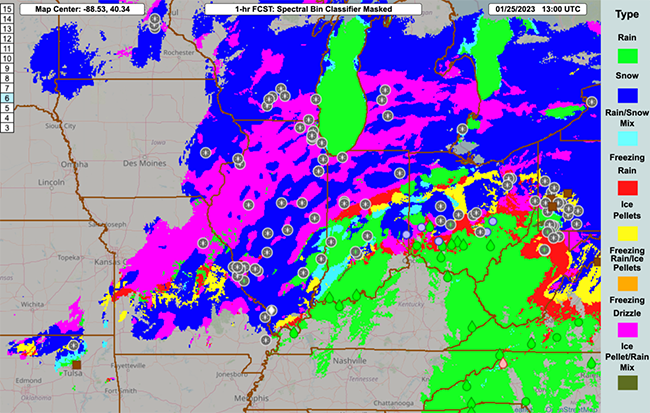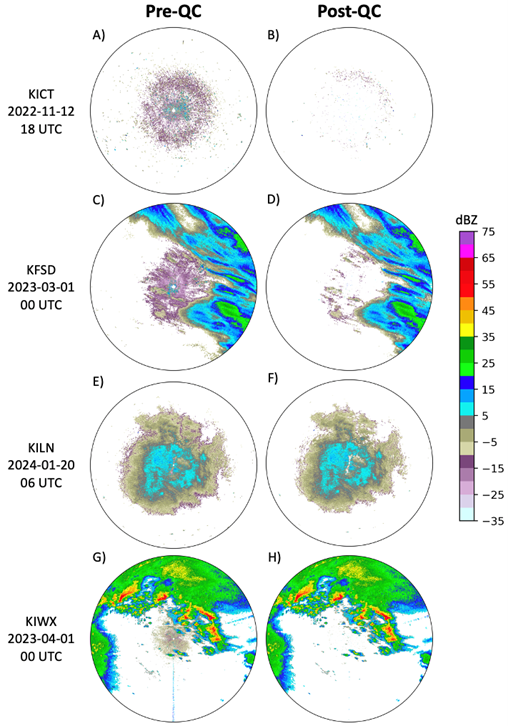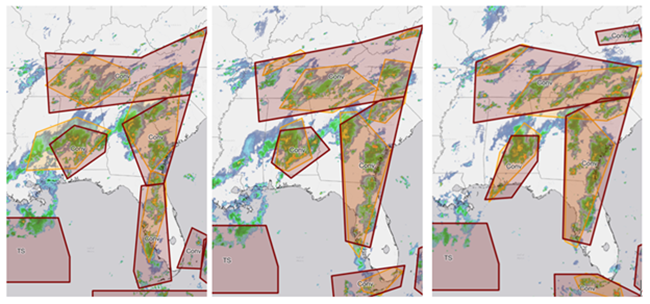Advanced Weather Radar Techniques
The Advanced Weather Radar Techniques (AWRT) project improves and increases weather radar systems’ detection and forecast of aviation-impacting weather conditions. In particular, the AWRT project supports the development and improvement of the Multi-Radar Multi-Sensor (MRMS) system, and enhances the delivery of aviation weather services by the National Weather Service (NWS). The AWRT project develops aviation threat-specific information through the MRMS platform while researching and testing future weather sensing and processing capabilities. Additionally, AWRT can support research and development into other weather radar mosaics and techniques.
Once developed, tested, and validated by the National Severe Storms Laboratory (NSSL) on the developmental MRMS system, NSSL evaluates the algorithms and capabilities for the potential transition into the NWS operational MRMS system at the National Center of Environmental Prediction. The successful deliverables will improve and increase the MRMS system’s detection and forecast of aviation-impacting weather conditions and enhance the delivery of aviation weather services by the NWS.
Hydrometeor Classification
Integrating a Hydrometeor Classification Algorithm and Spectral Bin Classifier (SBC) into MRMS to improve the diagnosis and depiction of icing conditions of interest to aircraft operations. This work will create a seamless, rapidly updating hydrometeor classification from the top of the cloud to the ground. Improved hydrometeor discrimination and classification will be critical for enhancing terminal-area icing hazard evaluations and warnings and improving efficiency and effectiveness of ground de-icing operations.

Quality Control
Removing non-meteorological targets from ground clutter returns using dual-pol quality control (QC) methods. The MRMS QC algorithms remove echoes containing light precipitation. More advanced artificial intelligence (AI) to retain these echoes will allow for improved situational awareness of potential terminal-area icing situations.

Convective SIGMETs
Developing strategies to automatically detect convective Significant Meteorological Information (SIGMET) conditions to ensure that rapidly developing convection is not missed during the production of SIGMETS. This work aims to advance AI designed to automatically detect convection that poses a threat to aviation.

